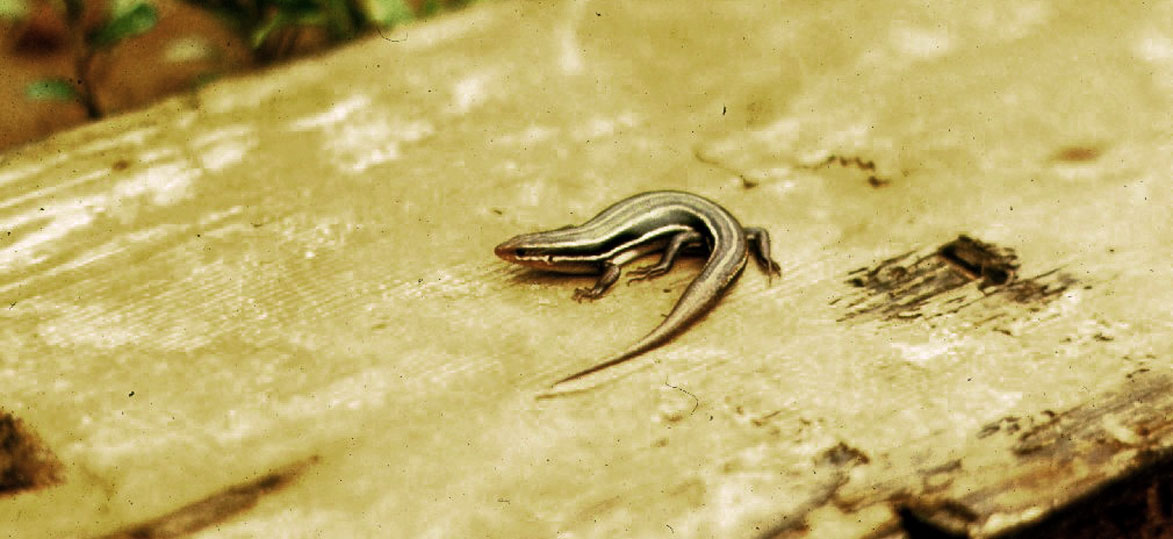
When young, the common five-lined skink (Plestiodon fasciatus) has a bright blue tail and five lengthwise stripes across its black back. Adult females have similar but less distinct patterning. The blue tail coloration usually fades with age but may be retained by adult females. Adult males are dull brown and develop a widened head and a reddish-orange throat and face during the breeding period. Adults typically range 6–8 inches in length.
The species has been nicknamed "blue-tailed swift" because of its juvenile coloration and speed. If pursued by a predator, a skink may drop its tail, which will continue to move autonomously. This defense is intended to divert the predator’s attention, while the skink seeks cover.
Habitat
Common five-lined skinks can be found in few, specific habitats in Vermont. This elusive reptile inhabits rockslides, ridges, ledges, open woods, farmsteads, old buildings, and is often found near water.
Reproduction
Female common five-lined skinks will lay 6–18 eggs in stumps or rodent burrows, beneath rotting logs or rocks, or under bark or other debris. During the one to two month incubation period, females will defend their eggs from small predators and tend to them by retrieving displaced eggs, removing rotten eggs, and maintaining moisture levels by covering eggs with soil or urinating on them. Females sometimes lay their eggs communally and share brooding responsibilities.
Diet
Common five-lined skinks eat mostly insects, including crickets, grasshoppers, beetles, caterpillars, spiders, earthworms, snails, slugs, isopods, amphibians, smaller lizards, and newborn mice.
Management
Thanks to the Nature Conservancy, some of the land that supports Vermont's common five-lined skink populations is protected from development.
Status
Endangered in Vermont.
